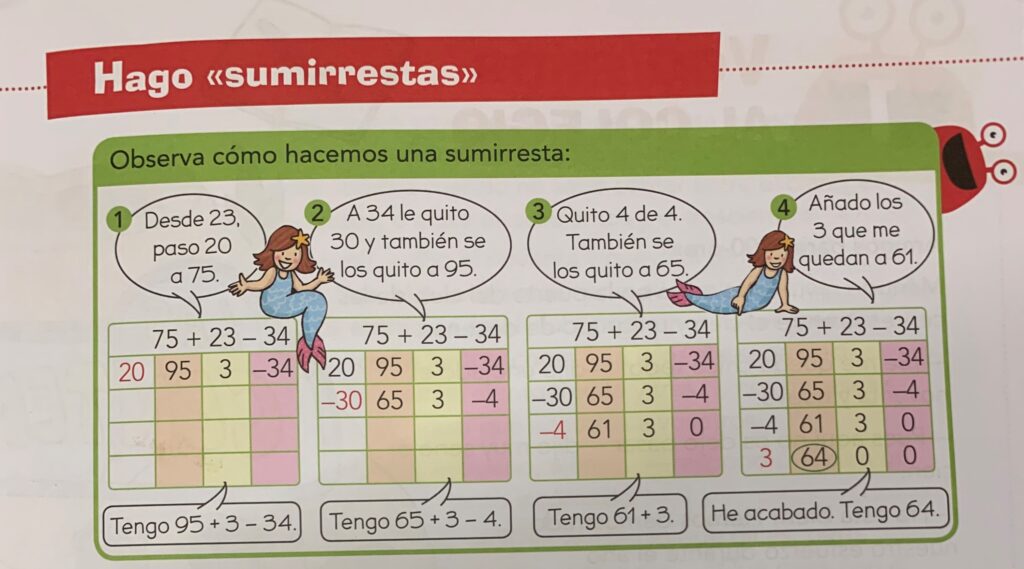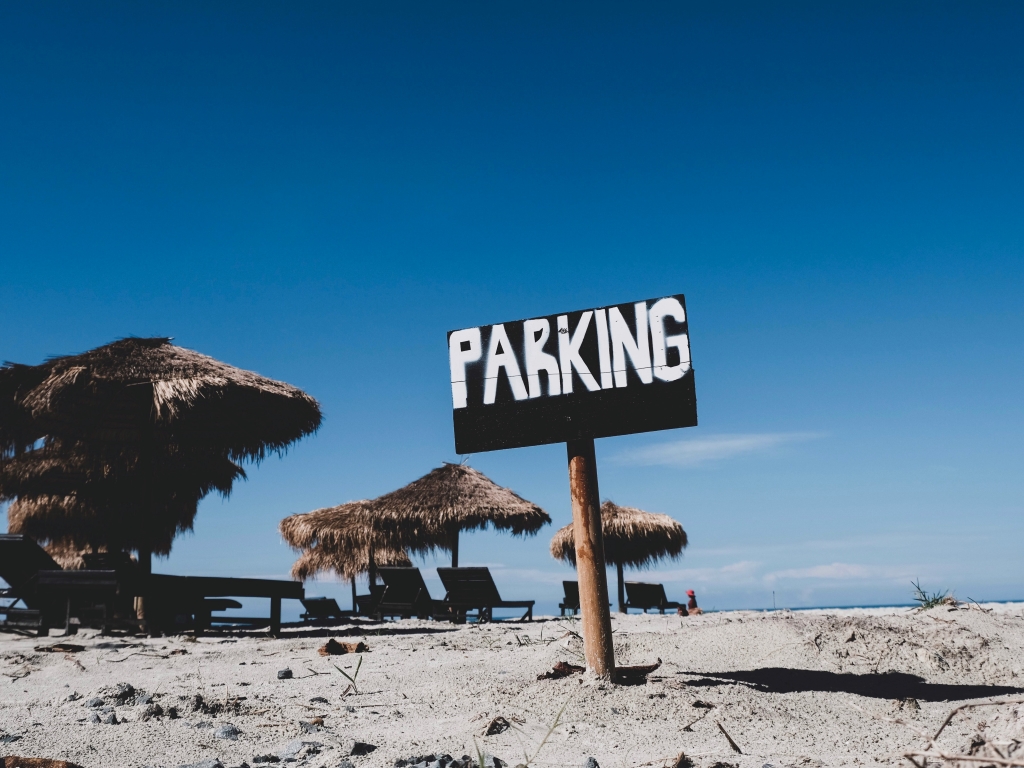January 24, 2023
Our mixed experience with schools in Spain – A big part of our preparation before moving revolved around learning about schools in Spain. It’s been more than a year since we arrived now, so I finally feel confident enough to share our experience with them. We chose to arrive in January in great part because of the enrollment process, and we had already figured out that we would have to enroll Kiddo for at least one semester at a private school. As we didn’t have much metrics to compare private x public schools, we decided to postpone the decision about where he would study after that first semester for latter.
Table of Contents
The preparation before moving – a bilingual school in the USA
We lived in the USA before moving to Spain. As we planned for four years before actually moving, we had quite some time to prepare, and the fact that Kiddo didn’t speak Spanish was one of our concerns. We decided to handle this by enrolling Kiddo in a bilingual school (English/Spanish) while in the USA.
Enrolling him in that school, as a foreigner that doesn’t know the local school system in depth, was in fact much harder than enrolling him at the public school in Spain years later, as on-line information was scarce and even contacting the local schools through e-mail or phone didn’t help much. I guess people everywhere assume others are born knowing the school system of the area where they live. Once that was accomplished, I thought Kiddo would learn a lot or at least enough Spanish. I was wrong.
Kiddo learnt how to read age 4, still in pre-school. He started studying at the bilingual school in the USA age 5, but that was 2020 – Covid year, so school was done on-line. He learnt no Spanish at all (but learnt a lot about computers! He actually developed great reading skills by playing Minecraft after classes…).
The following school year, when Kiddo was able to go to school in person for six months before we moved, he teamed up with the other English-speaking kids. School at that age was so easy he could get by without paying attention to the class, so he didn’t put any effort into learning Spanish, despite the countless times I tried to persuade him to give it a try and my own attempts of teaching him. I guess there is only so much you can ask of a 6 year old.
Despite our outcome, I do think that if you have the opportunity to enroll your young kids in a bilingual school before moving to Spain, it is a good idea to do so. Our attempt was harmed by the pandemic situation; without it, it is possible we would have had a better result. It is true that pandemic or not, he would have teamed up with English speakers anyway, but at least he would have been immersed in a Spanish speaking environment for longer than the mere 6 months he had (and while younger).
If your kids are younger than Kiddo was, great, I believe they will benefit tremendously and learn a lot from a bilingual school. If your kids are older, I believe keeping them studying in their native language and enrolling them in a Spanish course instead of a bilingual school may actually be better and less stressful for the kids.
Before moving, we knew that due to schedule and our lack of full documentation, Kiddo would have to go to a private school in Spain, at least in the beggining. We were not yet sure of exactly where we would end up living in the Costa del Sol, but Torremolinos and Benalmádena were our strongest contenders. We also thought that continuing with a bilingual education on that stage would be ideal.
With these parameters in mind, I checked google for private, bilingual schools in those two cities and wrote to some of those, checking for prices and the possibility of enrolling Kiddo in the middle of the school year. I got responses from most of them, but the question about availability was often left unanswered as they didn’t know yet if a space would be available next January.
Our experience with a private school in Spain
When we arrived, narrowed-down-school-list in hand, finding a spot was fast. A few phone calls and we chose his private school. He was enrolled the next day and started attending classes two days later – it was our fourth day in Spain. The fastest thing I’ve ever done in Spain, for sure.
It was the course of that semester that made me realize that I had not asked the right questions in my e-mails to the schools. But you can do better; keep reading and check also choosing the right school for your kids. The first thing that stood out was how small this new school was. Kids had almost no space to run during break time, something less than desirable, but not yet as bad as what would come next: this school was not bilingual, it was fully Spanish-speaking.
Surprise, surprise! I went back to their website and it was there: not only it said it was bilingual, it was a reference bilingual school in the area, according to themselves. Nevertheless, only the English teacher spoke English in that school; Kiddo’s main teacher did not, in the secretary they didn’t either. How come it was a bilingual school? Oh, they offered British language exams, that’s all. Far from what I understand from a bilingual school. So, if you choose to enroll your children in a bilingual school, it is suitable to ask what classes are taught on each language, just to be sure.
The surprises didn’t stop there: after classes, which run from 9:00 to 17:00, Kiddo brought home a lot of homework; something that took us about 3 hours to finish every day. That was waaaay too much for a kid his age that barely knew any Spanish and had already spent the whole day in school! His teacher was extremely strict; Kiddo complained daily that she screamed in the class, with him and with all other students, about anything she considered less than perfect.
I talked to the school about the screams the day Kiddo hid under the bed to try not to go to school. They pretended to be surprised and nothing changed. I talked to the other parents (that is what kid’s birthday parties are for, right?), they all agreed that their kids told the same at home about the teacher screaming in class.
The thing is, though, that kids did improve a lot under her ruling. It was a firmly handled dictatorship, and Kiddo did learn a ton of Spanish really fast. Moreover, Kiddo learnt to write cursive letters (which he kindly calls cursed letters), something that was not taught in the USA, but was expected in Spain from kids his age. And his calligraphy was beautiful right from the start under the screaming teacher. The expectations in Spain were clearly bigger than in the USA for kids his age.
The school was also strict with the lunch hour. Kids that ate there did indeed eat everything in their plates. That is because the people that handed lunch were kind of similar to the screaming teacher, and “I don’t like that” was not reason enough to not eat. Kiddo hoped and tried to convince me he was allergic to fish, but no, he isn’t.
Was it worth, though, so much discipline for kids that were not doing anything bad, just the usual mistakes of learning the multiplication table and spelling, and the occasional talk during class? I don’t think so. Kiddo was crying at home because of the teacher, and that simply couldn’t be right. Every evening he was sad with the anticipation of having to go to class again next day and that had never happened before. There is no good reason to make a 7-year-old feel like that.
The parents I talked to were ok with the trade off – rude but efficient teacher – and argued that life was like this, after all; we can’t protect the kids so much, or else they become weak or spoiled. Talk about cultural shock. Or talk about making them passive, traumatized sheep instead of active, healthy, free-thinkers.
For me and Kiddo that wasn’t the way to go. Kiddo, after all, had just moved to a new country, with new language and new colleagues; screaming at him because his calligraphy was imperfect was unreasonable. As is unreasonable to scream with any kid that does a mistake while trying to learn. The best punctuated European countries in PISA, such as Estonia and Finland prioritize children’s happiness. Yes, happiness, meaning that if they feel happy in the school, they will feel more engaged in learning. I side with them.
In this private school, there was some bullying, but at low levels. It was not what scared Kiddo, that was totally on the teacher – the big bully. There were no more than 25 kids per class, and only one class per grade. Information about the kids was transmitted to the parents daily, through notes on their paper planner, which needed to be checked and signed by the parents every day. Stuff like incomplete home or school work, next exams and such were all there.
The exams kids did were sent home to be corrected with help of the parents, as part of the homework. I was feeling burned out from the amount of homework of the second grade of elementary and from Kiddo’s unhappiness. To crown it all there was my archenemy: the ABN method.
ABN Method
Oh boy. The ABN is a method to teach math that makes it 147.893 times more complicated than it needs to be. It was created in Spain and used for the first time in Andalusia. It is supposed to be an open way to manipulate numbers – whatever that means – to let kids calculate the way they feel like, but the screaming teacher made it (loud and) clear that the only way to do it was the one described by the book. Basically, it made 2nd grade elementary math look complicated. Below, an example for you to figure out, if you like crosswords:

It has logic to it, and sure, one gets to the right result. But you see, one can go from Malaga to Madrid straight away or passing through to Moscow. Which one is the best way? Let’s just say the traditional method goes straight there, while ABN goes to Moscow, then Rio de Janeiro, before getting to Madrid. Learning, teaching and trying to convince Kiddo that it was reasonable to do math this way because then his teacher would scream less added to my despair.
It was obvious that Kiddo would go to another school the following semester, and I was very much willing to try the public school. But before we move on to our experience with the public school, let me clarify that this was one bad experience with one bully-screaming teacher in one not-really-bilingual private school (that knew about the screaming and did nothing about it). I still have contact with some of the parents from that school and they say that the teacher of the following year is completely different – he is kind. The kids still have more homework than I would consider reasonable, but less than before. And they keep trying to figure out math with the ABN method.
Our experience with a public school in Spain
We like it 😊 It is not all flowers, of course, though there are several flowers on the path we follow every morning, hand in hand, on the 10-minute school walk from home. Kiddo studies there from 9:00 to 14:00, then I pick him up and we eat at home. In the afternoon he goes to swimming lessons and does either extra math or Spanish studying with me, besides homework, which is not sent home every day. And then he has plenty of time to play whatever he wants, as long as the grades are good. Neither of us is feeling unhappy, desperate or anxious anymore.
Kiddo is super happy with his teachers-that-smile (his description) and with the break time. This school is big and has plenty of space for kids to run. The school is – surprise, surprise! – bilingual. I didn’t know that beforehand and I didn’t expect that a public school that doesn’t include this information in their description would be bilingual, but see how things are.
Math (which is normal, not ABN!!!) is taught in Spanish – but if Kiddo doesn’t understand the task, the teacher helps him in English; science is taught in both languages simultaneiously. His English and Spanish teacher are the same person, and she is also kind enough to help him in English if necessary. So does the Physical Education teacher. Kiddo is also kind and teaches English to anyone that asks, which helps making friends.
Bullying was a bit of trouble in the first days, but as time passed it lowered considerably. Nothing major happened; the worst he told me was that an older kid mocked him for speaking a funny Spanish and about some pushes (which scare me. But Hubby says boys that age are like that anywhere; I believe this kind of things happened in the private school too, just not with him).
I think he is feeling more adjusted now and I know that foreign kids are not so exceptional in this school, which is helpful to him. His best friends are one English-speaking Russian boy and a Spanish boy, so he is not teaming up just with the English-speaking kids, which is great.
The Spanish/English teacher told me that Kiddo’s calligraphy needs improving (it worsened without the screaming teacher), so twice a week he brings home one page of calligraphy homework. She also suggested that he could attend the afternoon reinforcement classes to help him with Spanish, so he does it, twice a week – I didn’t know that the school offered that.
But I think his main source of improvement are the Spanish-for-foreigners classes that the school provides during school hours, which I didn’t know about either. His languages skills are evolving, and now we talk Spanish in this house whenever (I remember and) Hubby is not around (because Hubby is not on that level yet). Kiddo also brings books from the school library to read at home.
By now you may be starting to realize the not-all-flowers part of this school. In my opinion, communication with parents is lacking from the school itself (not from the teachers). You see, right from enrollment, I asked for the list of materials. They said it would be available later. Two weeks before the start of the classes I went again to ask the same. I was told in the secretary that I didn’t need to buy anything, the school would provide it all.
On the first school day Kiddo took pretty much only his lunchbox (snackbox, actually) and pencil case to the school. We were, only then, told to buy a notebook. We did. Then we were told that was not the right notebook, it had to have grid pages with 5mm between the lines, and he needed 4 of these. We did it. Then Kiddo told us he also needed erasable pens in color blue and red (turns out these exist!) we got it. And glue. And so on.
He didn’t need schoolbooks, though. The school indeed provides those, but they always stay in the school. We opted to buy the Spanish book so we can do some reinforcement at home. But that was not all. It took Kiddo making friends with a colleague, and we setting up a play date, for me to learn from the other mother that the school used Google Classroom daily to share pictures of what the kids learnt. The teachers take picture of the blackboard and post it; if kids couldn’t finish copying, they have the information at home, on a computer, phone or tablet.
That is a big plus for the school, and for us, I just wish I knew that sooner. The teachers also communicate with the parents through Google Classroom. Another tool the school uses is the Ipasen, an app from the Junta de Andalucia (the government of Andalusia) that informs about school calendar, kids grades, missing school days and such.
Both Ipasen and Google Classroom tools are quite useful to follow up the progress of the kids. And I knew about neither. Because of these tools, there is no need to check Kiddo’s planner everyday (though he has one, occasionally used by the teachers to post grades, because Ipasen doesn’t publish partial grades, only the main grades).
Overall, my impression is that public schools in Spain are great. They are bigger than their private counterparts; have better teachers (that smile and not scream) that are more prepared (they know English); teach math properly (not ABN) and are really bilingual schools (despite not informing it). They are also harder to enroll (bad side), use more technological ways to contact (not a paper planner) and have an ethnically diversified set of students – mine is a foreigner and I’m guessing so is yours. Better if they are not the only ones in school, right?
Now I feel is my obligation to remind you that this is only my experience. Other parents can have completely opposite experiences with their choice of schools. Some of the parents in the private school Kiddo attended mentioned that they had bad experiences in a public school before (related to bullying) and for this reason chose to go to a private one. Though I think sharing one’s experience is relevant, and I wish I had read other people’s experience before, keep in mind that this is just one family’s experience.
And since we are talking about that, please leave a comment telling your own experience with schools in Spain. I think together we can learn much more.
Next: International and bilingual schools in the Costa del Sol







Super helpful! We too are looking to move to Spain and deciding upon private school vs public school. The math example was ridiculous AND helpful! Also, thanks for explaining the length of day difference in public and private school and the homework difference.
Thank you very much Brian! I wish you the best when moving to Spain!
Thank you so much for this incredibly informative post. We are looking to move near malaga as well and while I’m so excited about my children not having to do active shooter drills at school, I’m nervous about finding a public school they feel happy and welcomed in.
You are welcome! I hope you find a great school for your kids!
Hi, I was wondering which private school your son went to? My son also goes to a small private school in Torremolinos, but with limited homework and no shouting. But the hours I believe are better than public.
Hi Claire,
I’d rather not put the name of the school he went to here, because I feel it could have negative repercussions. But indeed, I believe not all private schools are the same. Since you had a positive experience, would you mind sharing the name of the school, if you recommend it?
If you prefer not to say, though, it is completely understandable.
Hi, yes I would definitely recommend it, he goes to Miramar colegio in the centre of Torremolinos, sadly they don’t do bachillerato. So my daughter who also attended has moved to maravillas in Benalmádena, which is conceptada. I highly recommend both schools as we were not happy with the local public high schools here
Thank you for sharing your knowledge, Claire!